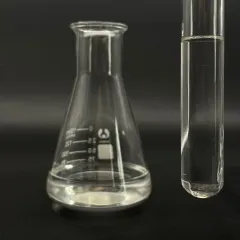Betaine surfactants POPE p-Tert-octylphenol-ethylene oxide condensate CAS 2315-64-2
Betaine surfactants
It is produced by the reaction of fatty tertiary amines and sodium chloroacetate, consisting of cocoylpropyl betaine, dodecyl betaine, cetyl betaine, and lauroyl propyl betaine. It is milder than the initial 3 and is currently the major surfactant in infant shampoo.
In 1940, the American DuPont Business designed and applied this kind of compound. Like amino acid surfactants, this type of surfactant has strong detergency and low irritation, and the service is weakly acidic. Animal experiments have shown that this type of compound is less harmful. It is an ideal surfactant.
( surfactants in shampoos)
Amino acid surfactants
Made from a mix of coconut oil and amino acids, it is risk-free, gentle, and non-irritating. One of the most important point is that it is naturally weakly acidic and satisfies the pH demands of healthy and balanced skin and hair. It is the ideal surfactant in baby hair shampoo. They are “cocoyl glycine,” “cocoyl glutamate disodium,” etc
From the viewpoint of chemical buildings, its pH worth is in between 5.5 and 6.5, which is weakly acidic and close to the pH value of human skin. Therefore, it is gentle and skin-friendly and suitable for all hair types; amino acid surfactants are zwitterionic and quickly soluble in water. It is very easy to wash clean.
However it additionally has limitations. Amino acid surfactants are numerous to loads of times more pricey than normal surfactants, and the majority of are shampoos specially produced babies and kids. The drawbacks of amino acid surfactants are that they are not rich in foam and have weak purification ability.
The sensation of solidification and turbidity of surfactants in winter months is mostly because of the low temperature level triggering several of its parts to take shape or speed up.
(surfactants in shampoos)
What if surfactant solidifies and comes to be turbid in wintertime?
This is a physical sensation and does not have a considerable influence on the performance of surfactants. In order to address this problem, the following methods can be taken:
1. Raise the temperature level: Put the surfactant in a warm environment or increase its temperature by heating so that the crystallized or precipitated elements will progressively dissolve and the surfactant will certainly go back to a clear state. However, it needs to be kept in mind that the temperature needs to be avoided when heating to prevent influencing the surfactant’s performance.
2. Mixing: For surfactants that have actually strengthened or come to be turbid, they can be recovered to a consistent state by stirring. Mixing can help taken shape or precipitated components redisperse into the liquid and boost surfactant quality.
3. Include solvent: In some cases, a proper quantity of solvent can be contributed to dilute the surfactant, therefore boosting its coagulation and turbidity. Nonetheless, the included solvent should be compatible with the surfactant and ought to not influence its use effect.
Supplier of Surfactant
TRUNNANO is a supplier of surfactant with over 12 years experience in nano-building energy conservation and nanotechnology development. It accepts payment via Credit Card, T/T, West Union and Paypal. Trunnano will ship the goods to customers overseas through FedEx, DHL, by air, or by sea. If you are looking for high-quality POPE p-Tert-octylphenol-ethylene oxide condensate CAS 2315-64-2, please feel free to contact us and send an inquiry.
Inquiry us

